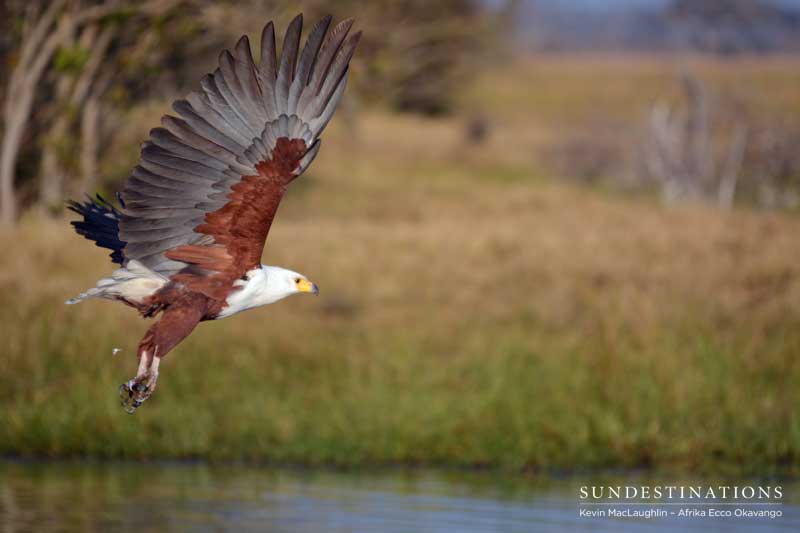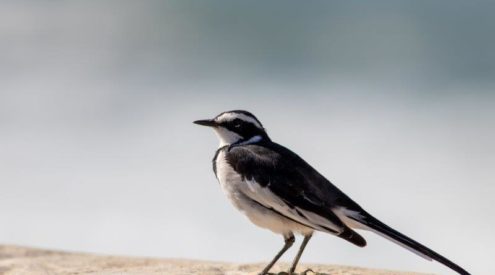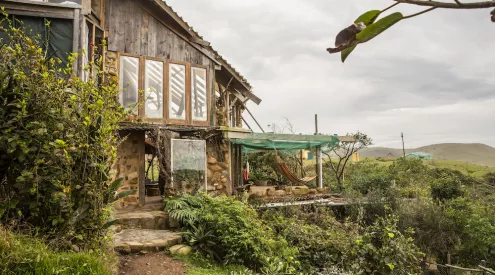In the Okavango, if you’re not scanning the grass for the buffalo-hunters of the Delta, you are checking the trees for some of Africa’s most colourful bird species… or at least you ought to be!
The Okavango Delta is a World Heritage Site; a maze of waterways and floodplains that is celebrated for its value as a unique ecosystem, sustaining an unmatched variety of bird, animal, and plant life in Botswana.
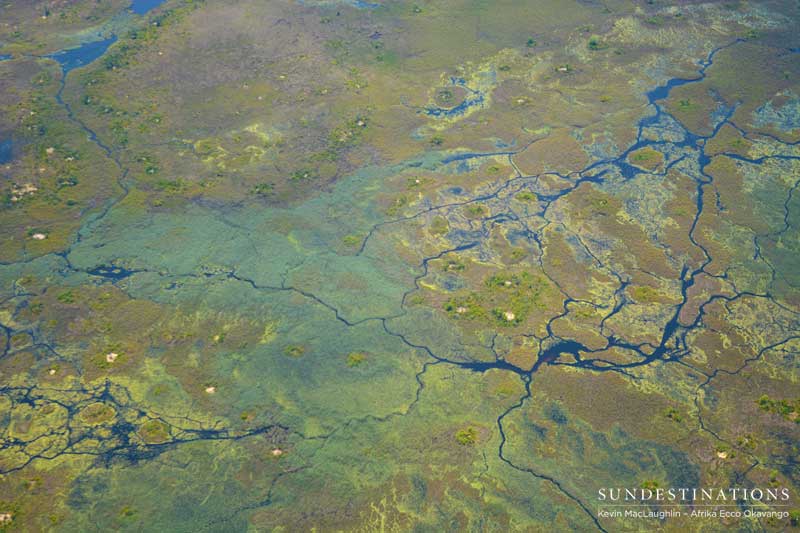
An aerial capture of the magnificent Okavango Delta.
Also read: mimosas on mekoros: the magic of the Delta
The liquid land – a marsh of mossy greens with sapphire reflections of the sky – spills over the Okavango riverbanks and out of drainage lines creating a fan-shaped jewel in the country’s northern reaches. Out of all the safari sights and sounds uncovered and explored during daytime activities, birds are a reliable constant, offering fantastic photographic opportunities and a songful tune of the wild. You can explore the wetland by boat, by foot, or by 4X4, but mokoro safaris take the cake for ‘best birding’ in the Okavango Delta; gliding beneath overhanging vines, flimsy reeds, and leafy branches, you can get an intimate look into the activity of water birds and ground fowls.
I spent some of my time in the Delta at Afrika Ecco Safaris, enjoying the starry nights under canvas tents pitched wherever the day’s tour had taken us. The guides were experts on the ground, pollers skillful at navigating the channels, and animals were approached with caution and interest, while hosts and chefs adorned the ready-made campsites with lanterns and lovingly-made food.
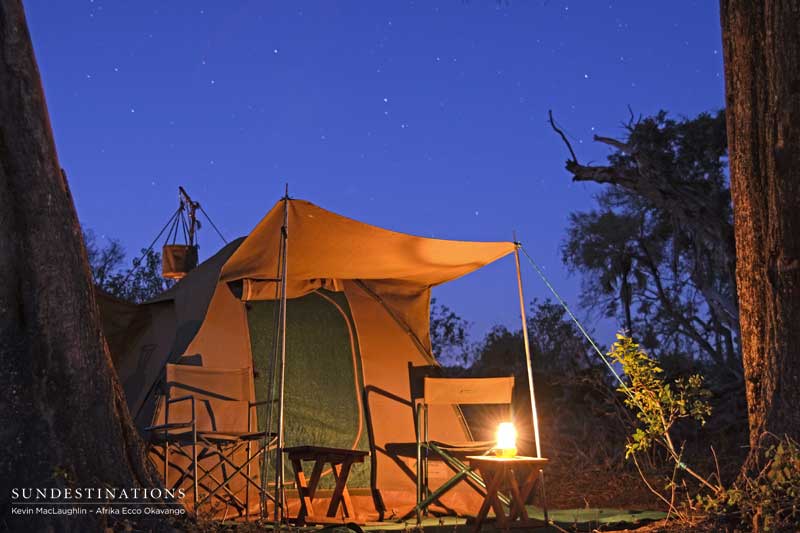
Bedroom under the Delta stars with Afrika Ecco.
African jacanas have feet disproportionately larger than their bodies with long ‘toes’ that pan out from their ankles, providing ample balance as they dart across lily pads and other broad water plants looking for food. It is the male of the species that looks after the young hatchlings, and often a line-up of fluffy, big-footed jacana chicks can be seen trailing Dad along the water’s edge.
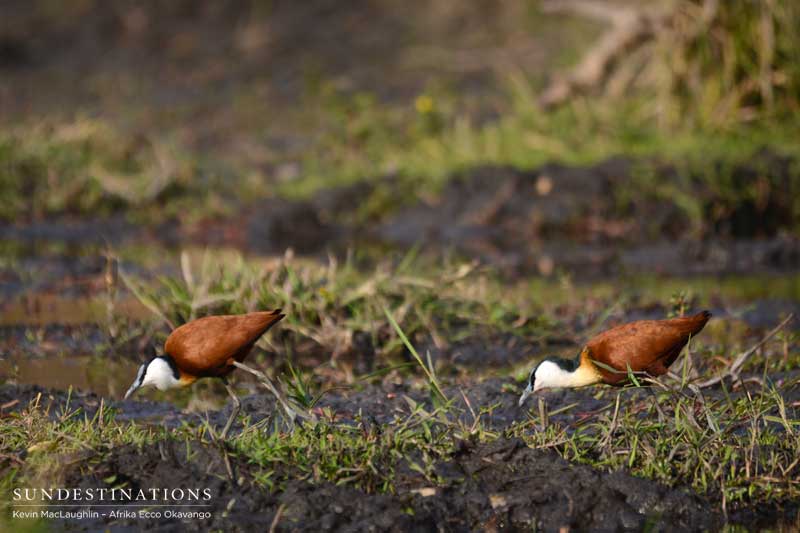
African jacanas.
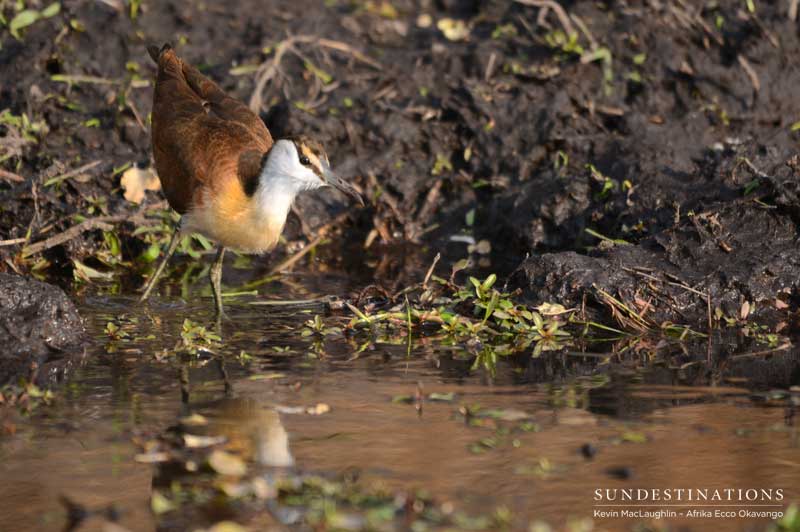
Juvenile African jacana.
Water thick-knees stand out with their arrow-marked plumage arranged neatly atop a pair of long, yellow legs, with glass-bead eyes and a beak of the same yellow hue. Lapwings are seen in abundance, with some – like the blacksmith and crowned lapwings – making up a large part of the birdsong orchestra.
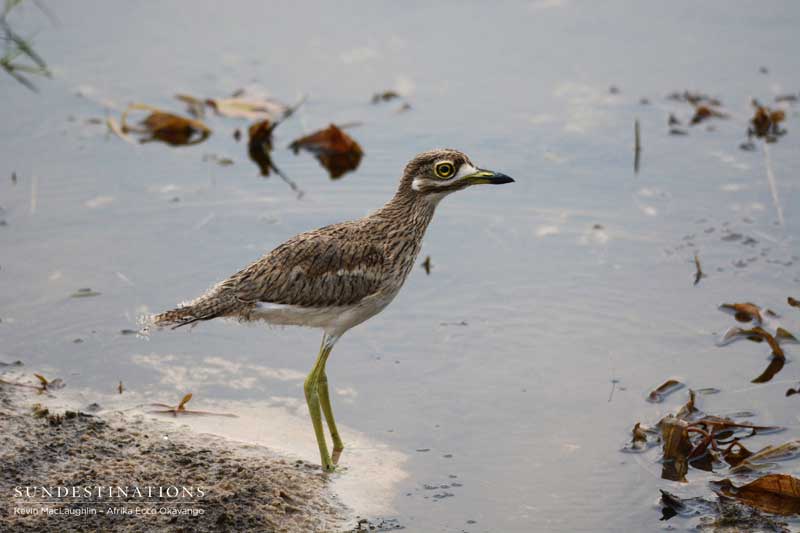
Water thick-knee.
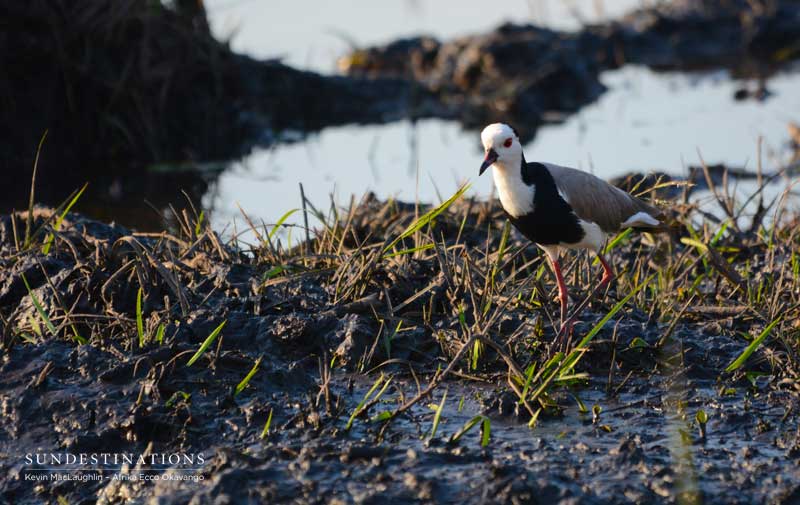
A long-toed lapwing patrols the swamp-like riverbank; its striking colours making a photogenic contrast.
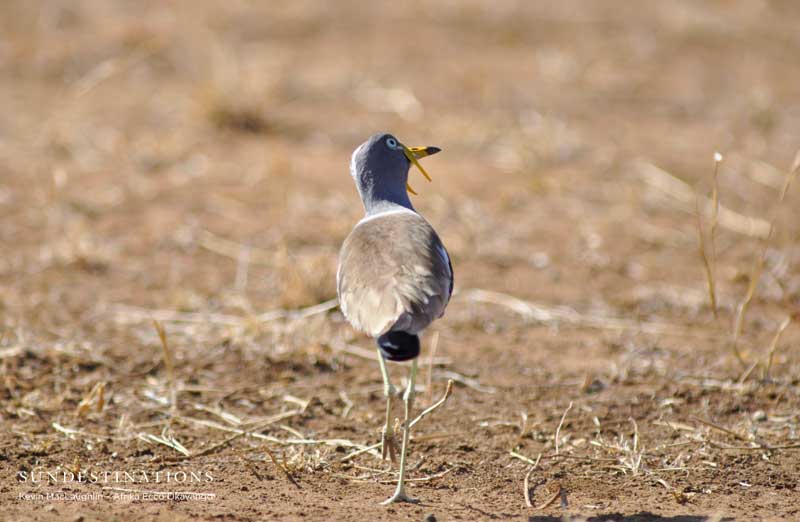
White-crowned lapwing.
Bee-eaters are some of the most colourful of the Delta birds, seen flitting quickly between branches and alongside the river. Carmine bee-eaters are larger than the others and they nest in communities, often rising from the ground in swarms of red feathers. Little bee-eaters reflect the sun in a glow of green and yellow, and if you’re lucky, the silhouette of an insect will be pinned to their sharp beaks.
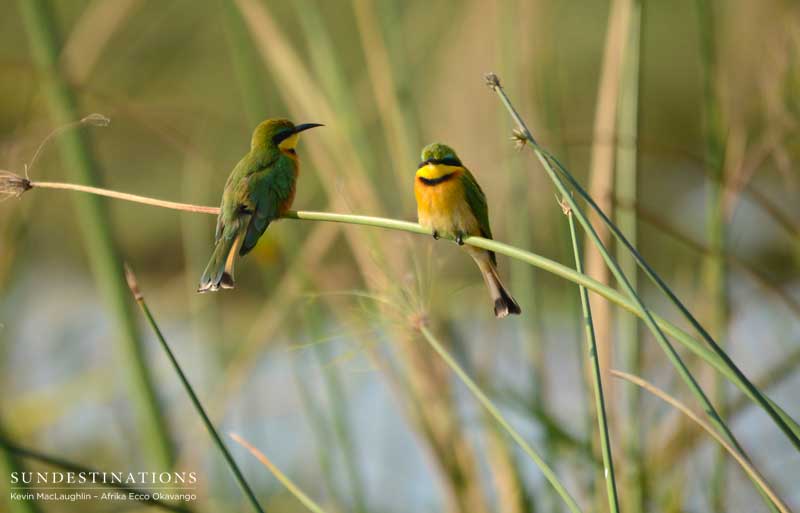
Little bee-eaters.
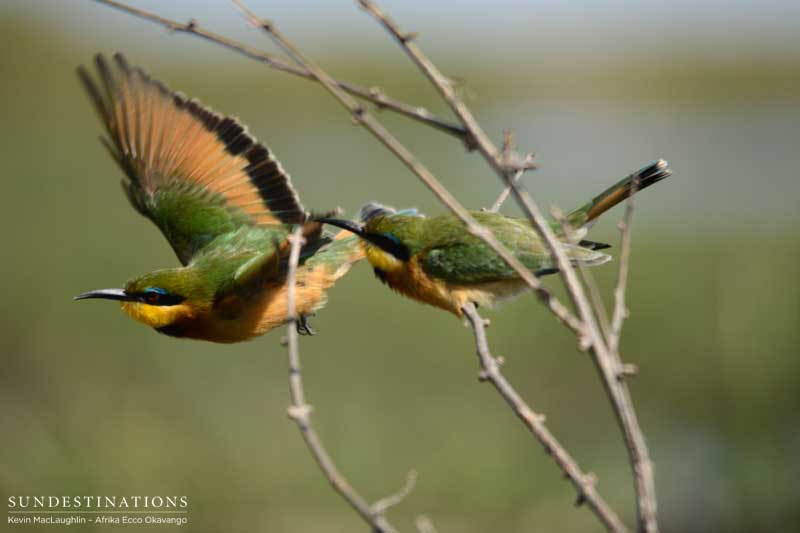
Little bee-eaters.
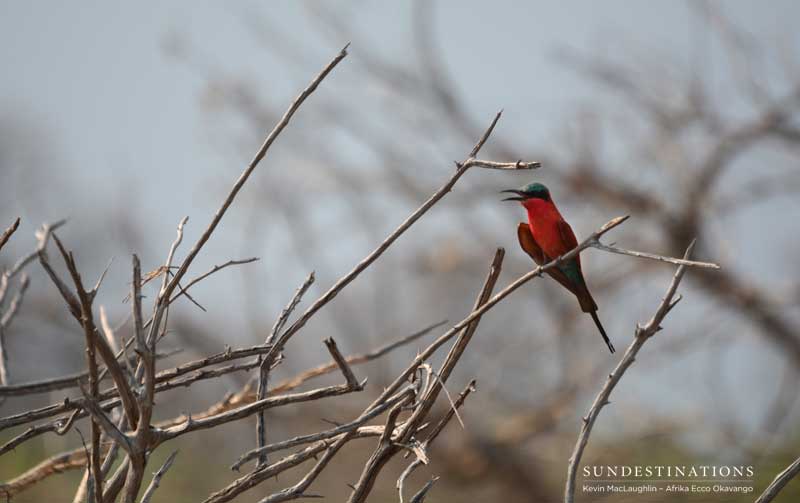
Carmine bee-eater.
Kingfishers fill the air with their busy calls ranging from harsh, rasping notes, to songful melodies repeated over and over again. Not all kingfishers eat fish, some preferring to feast on insects instead. Pied kingfishers hover over the water before diving in with a ‘plop’, while others sit motionless on overhanging reeds and skeleton branches, watching the water patiently like true fishermen.
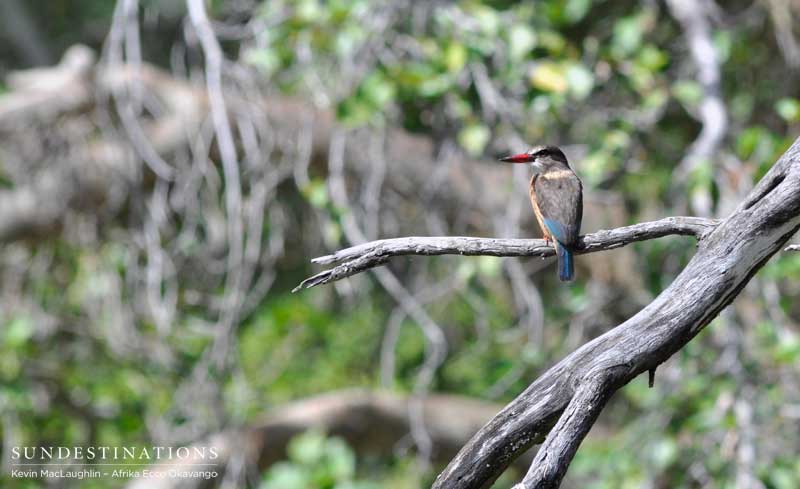
Brown-hooded kingfisher.
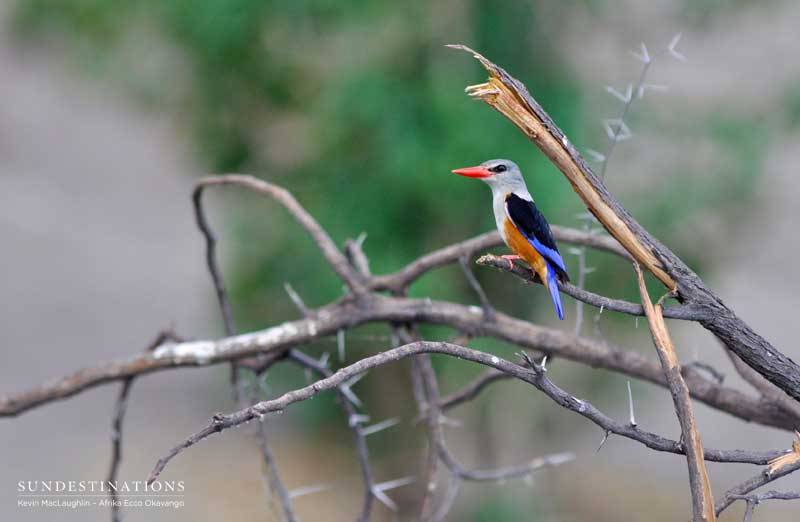
Grey-headed kingfisher.
A spectacular variety of birds find their homes in the Delta and there are endless opportunities to test your photographic skills with the frequent landings and lift-offs taking place around you. Nest building, courtship displays, melodic communication, and foraging keep these birds busy from sunrise until sunset, offering visitors some of the most fascinating glances into the nature of our feathered friends.
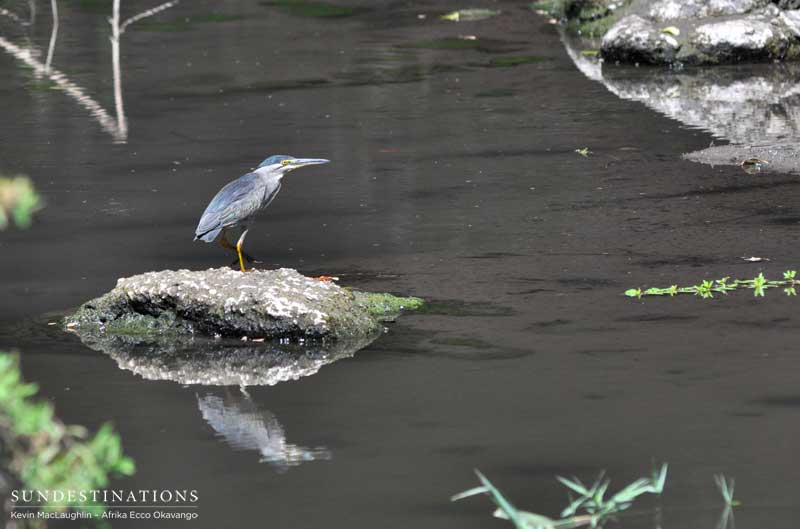
Green-backed heron.
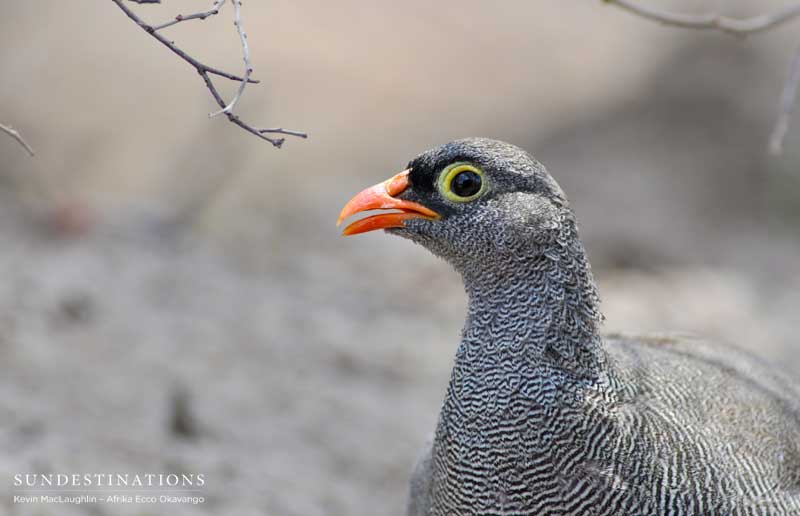
Red-billed spurfowl.
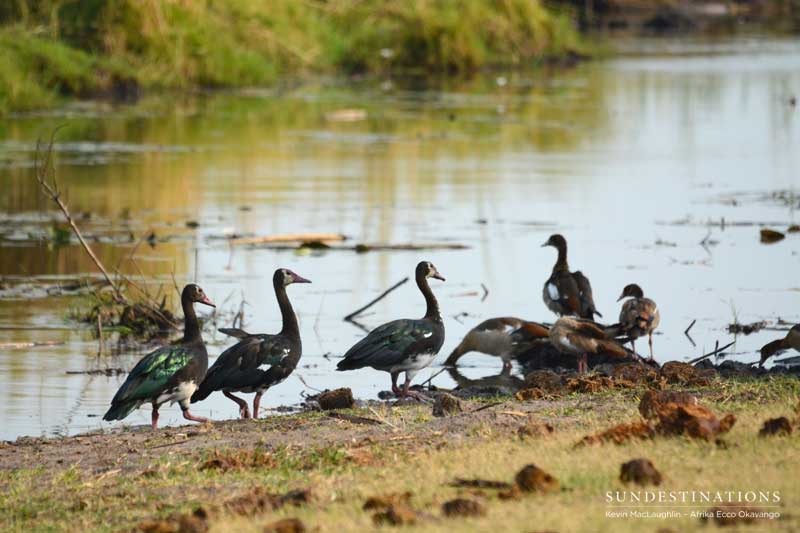
Spur-winged goose.
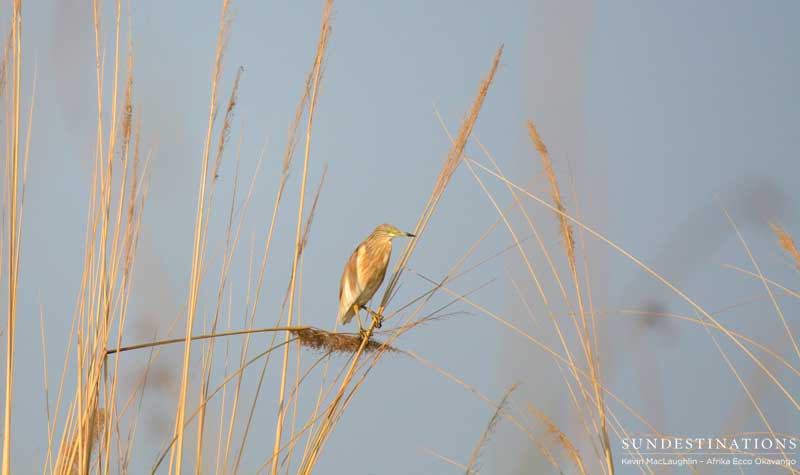
Squacco heron.
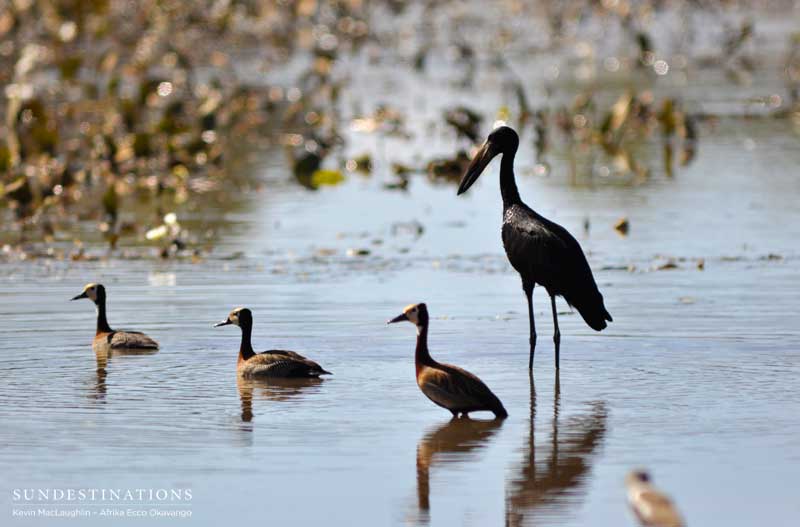
Whistling ducks and an African open bill.
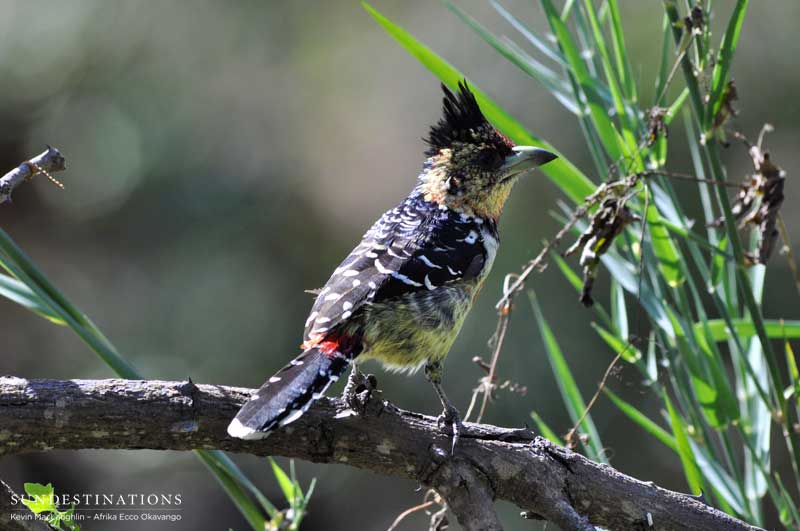
Crested barbet.









